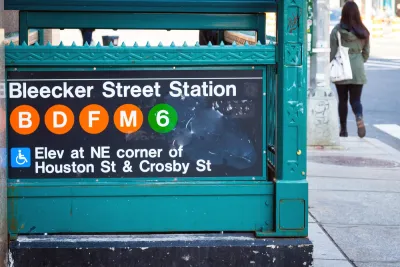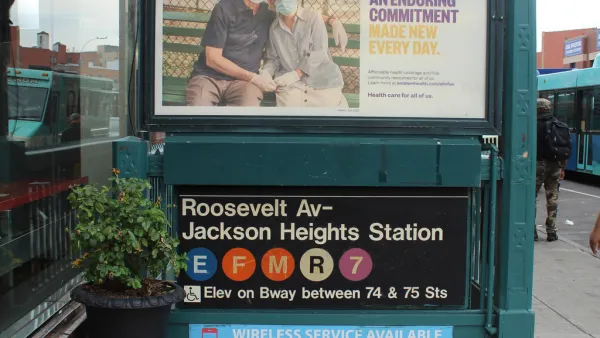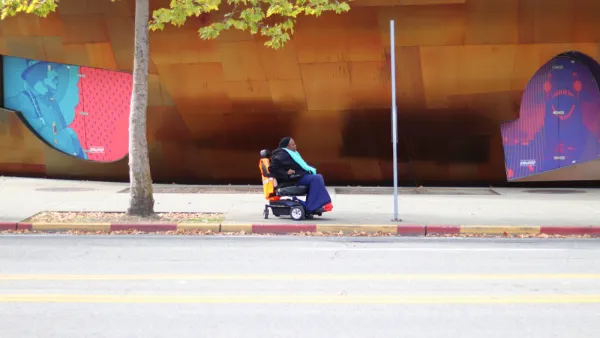The New York Times provides interactive and first-person accounts of the city's failure to provide public transportation to people with disabilities.

Eight years ago, Sasha Blair-Goldensohn was injured by a falling tree branch while on a jog in New York's Central Park. The damage to her spinal cord paralyzed her lower body, and she had to learn to use a wheelchair to get around the city. She writes of experience in navigating the city while in a wheelchair for a big, interactive feature by the New York Times.
As Blair-Goldensohn explains, her story, and those of others like her, show "how large, inflexible bureaucracies with a 'good enough' approach to infrastructure and services can disenfranchise citizens with disabilities, many of whom cannot bridge these gaps on their own."
The article reveals the many failings of public space and transportation infrastructure for people challenged by mobility disabilities. For instance:
New York’s subway is by far the least wheelchair-friendly public transit system of any major American city, with only 92 of the system’s 425 stations accessible. That means fewer than one in four stations can be used by people in wheelchairs when elevators are working — and they frequently are not.
The list of difficulties, bad practices, and bad design and engineering go on, revealing a public transportation system that falling fall short of its responsibilities in providing access and mobility for the entire city's population. And Blair-Goldensohn knows it's possible for the system to be improved—Boston's subway system, built in the same era, is 90 percent wheelchair accessible. Blair-Goldensohn also appeals to the demonstrated benefits to all of society when investments are made to accommodate its most vulnerable members—a phenomenon known as the curb-cut effect.
The article also includes this interactive video, which reveals a first-person perspective on the use of New York's subway system while in a wheelchair.
FULL STORY: New York Has a Great Subway, if You’re Not in a Wheelchair

Analysis: Cybertruck Fatality Rate Far Exceeds That of Ford Pinto
The Tesla Cybertruck was recalled seven times last year.

National Parks Layoffs Will Cause Communities to Lose Billions
Thousands of essential park workers were laid off this week, just before the busy spring break season.

Retro-silient?: America’s First “Eco-burb,” The Woodlands Turns 50
A master-planned community north of Houston offers lessons on green infrastructure and resilient design, but falls short of its founder’s lofty affordability and walkability goals.

Test News Post 1
This is a summary

Analysis: Cybertruck Fatality Rate Far Exceeds That of Ford Pinto
The Tesla Cybertruck was recalled seven times last year.

Test News Headline 46
Test for the image on the front page.
Urban Design for Planners 1: Software Tools
This six-course series explores essential urban design concepts using open source software and equips planners with the tools they need to participate fully in the urban design process.
Planning for Universal Design
Learn the tools for implementing Universal Design in planning regulations.
EMC Planning Group, Inc.
Planetizen
Planetizen
Mpact (formerly Rail~Volution)
Great Falls Development Authority, Inc.
HUDs Office of Policy Development and Research
NYU Wagner Graduate School of Public Service




























